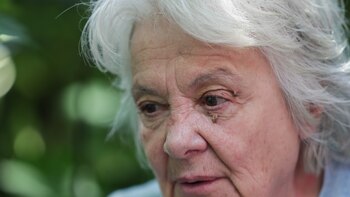
(ATR) New images from LOCOG depict how three of London 2012's most spectacular arenas will look at Games-time.
Lord’s, Greenwich Park and the Lee Valley White Water Center provide a mix of existing, adapted and brand new locations. Each is set to provide memorable images for archery, equestrian and canoe slalom events judging by the computer-generated slides.
"We want to showcase London, with venues right in the heart of the city," LOCOG venues director James Bulley said Thursday at a press briefing.
"We will deliver a sustainable Games, made a promise to be the most accessible Games, a commitment to make safety the number one priority and deliver venues in historic locations."
World Heritage Site Greenwich Park will house an arena for show jumping and dressage set against the 500-year-old Queen’s House, with the impressive London city skyline in the distance.
However, there was a substantial obstacle that needed to be crossed for that to happen.
"There is a four-meter drop from one end of where the arena will be sited to the other, which is unacceptable for equestrian sport – the federation told us it needs to be flat," said engineer Steve Caldwell.
Various options were discussed before Caldwell’s team came up with erecting scaffolding below ground to raise the turf into an even surface. They mocked-up the arena on a farm outside London and invited leading riders to try it out.
"Horses are sensitive to vibration too so we wanted to make sure that this wasn’t an issue. [FEI] and the international show jumpers gave it a clean bill of health," added Caldwell.
Lord’s, the fabled home of English national summer sport cricket, will host archery with the 6,000-seat arena built on the outfield in line with the distinctive pavilion and ultra-modernmedia center. LOCOG persuaded the world governing body to relax its rules on a strict north-south aligned field to make it look better on TV.
A 12,000-capacity amphitheatre will rise at Lee Valley, where the equivalent of 60 bath-fulls of water per second will be pumped down the course.
With just 17 months to go, venue chiefs are moving into the next phase of their task to deliver 100 sites for the Games – arenas, training venues, accommodation, hotels, airports and railway stations all need to be kitted out with the temporary "overlay" required to make the games work.
"We are moving from the 'big build' to the temporary event installations," added Bulley.
"We have one million square feet of logistics floor space to store sports equipment, catering supplies and furniture across three centers in and around London.
"It’s the biggest temporary event installation ever."
As an example, Bulley must find a record number of temporary seats for spectators. Sydney had 150,000; Athens and Beijing each had 60,000; London plans to have 270,000.
LOCOG leaders said they want to create an informal, fun, festival feel to replicate the success of Sydney rather than the more ordered Atlanta and Beijing Olympics. They believe the atmosphere and venue presentations will be the lasting impressions of the Games.
While athletes around the world prepare for their ultimate test in 2012, the engineers and architects are nearing the end of their own personal Olympics.
"It’s a fantastic project – really amazing," admitted Caldwell.
"It presents challenges but it’s once in a blue moon and everyone wanted to be involved – it’s all about original thinking…There is no handbook for the creation of the Olympics."
Written and reported by Adrian Hill in London .
Últimas Noticias
Sinner-Alcaraz, the duel that came to succeed the three phenomenons
Table tennis: Brazil’s Bruna Costa Alexandre will be Olympic and Paralympic in Paris 2024

Rugby 7s: the best player of 2023 would only play the medal match in Paris

Rhonex Kipruto, owner of the world record for the 10000 meters on the road, was suspended for six years

Katie Ledecky spoke about doping Chinese swimmers: “It’s difficult to go to Paris knowing that we’re going to compete with some of these athletes”




